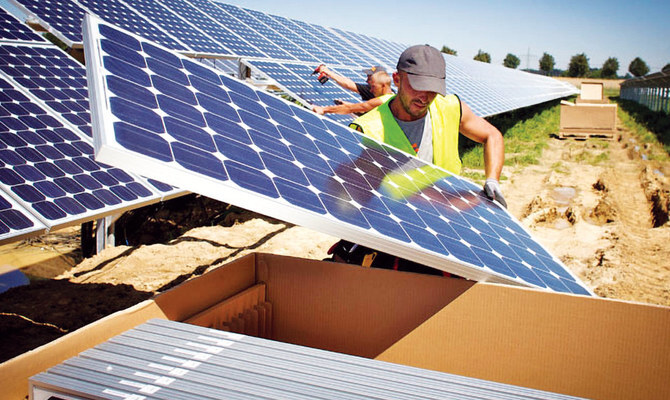Solar PV End-of-Life: Sustainability & Management
- recycling, solar
- 22 February 2024

As the adoption of solar photovoltaic (PV) panels surges globally, so does the challenge of managing their disposal responsibly at the end of their life cycle. Addressing the environmental footprint of solar PV waste is paramount to ensuring the sustainability of this green technology.
The Growing Solar PV Waste Problem
The rapid deployment of solar PV panels is leading to an increase in PV waste, posing potential environmental risks if not properly managed. As panels reach their end-of-life, the industry faces the pressing task of implementing effective waste management strategies.
Current Challenges in PV Waste Management
A significant obstacle is the absence of PV-specific waste regulation, leaving a gap in the framework for end-of-life management. Additionally, existing waste management infrastructures cannot handle the unique requirements of PV panel recycling and disposal.
The Need for Effective Regulation
The crux of managing solar PV waste efficiently lies in the establishment of effective, PV-specific regulations. Currently, the solar industry operates under a patchwork of policies that often do not address the unique challenges of PV panel disposal and recycling. Effective regulation would not only set standards for the safe and environmentally friendly handling of end-of-life panels but also incentivise the adoption of recycling technologies and the development of a circular economy.
For instance, the European Union’s Waste Electrical and Electronic Equipment (WEEE) Directive provides a framework that could be adapted for PV panels, mandating collection, recycling, and recovery targets for all types of electronic waste. Australia, in turn, could benefit from similar legislation tailored to its own environmental goals and solar deployment scale. Such regulations would ensure that manufacturers, importers, and distributors share the responsibility for the end-of-life phase of their products, encouraging them to design more recyclable panels and support recycling initiatives.
Expanding Waste Management Infrastructure
The current waste management infrastructure is ill-equipped to handle the specific needs of solar PV panel recycling. Panels contain a mix of valuable materials like silicon, silver, and aluminium, as well as potentially hazardous ones like lead and cadmium. Specialised facilities are required to safely and efficiently disassemble, process, and recover these materials.
Expanding this infrastructure involves significant investment in technology and facilities capable of handling the complexity of PV panels. It also means creating logistic networks that facilitate the collection and transport of end-of-life panels to these facilities. A forward-thinking approach could involve public-private partnerships to fund the necessary infrastructure and research into more cost-effective recycling processes. The goal is to create a seamless system where panels are not merely disposed of but are a source of recovered materials for new products.
Ecoactiv is one such private entity equipped with the logistical capabilities to achieve this approach. The company already recycles a large number of PV panels each year across Australia by working in partnership with installers and directly with households.
Promoting Reuse and Recycling
The promotion of reuse and recycling is vital for minimising the environmental impact of solar PV waste. Encouragingly, some components of PV panels have a second-life potential. For instance, the glass and aluminium frames can be easily recycled and used in the production of new products, while the silicon cells can be processed to recover silicon and other valuable materials.
However, promoting reuse and recycling requires a shift in both industry practices and consumer behaviour. Manufacturers can contribute by designing panels that are easier to disassemble and recycle, using materials that can be efficiently recovered. For consumers, awareness campaigns and incentives like buy-back or trade-in programs can play a crucial role in ensuring end-of-life panels are returned for recycling rather than disposed of as waste.
Fostering Research and Development
The future of solar PV panel recycling hinges on ongoing research and development. Innovative technologies not only promise to make recycling processes more efficient but also to increase the recovery rate of valuable materials. For example, research into new methods for separating the different components of a solar panel can lead to less energy-intensive and more cost-effective recycling solutions.
Moreover, R&D can explore the use of alternative, non-toxic materials in the manufacturing of PV panels, which would simplify the recycling process and reduce environmental risks. Government funding, alongside industry investment in R&D, is crucial for driving these innovations. Collaboration between universities, research institutions, and the solar industry can accelerate the development of sustainable technologies and practices, setting a new standard for the lifecycle management of solar PV panels.
A Sustainable Path Forward for Solar PV
The management of solar PV waste is a critical issue that requires immediate attention from the industry, policymakers, and the research community. By implementing effective regulations, expanding infrastructure, and fostering innovation in recycling, we can ensure that the benefits of solar energy are fully realised without compromising our environmental responsibilities. Together, we can navigate the future of solar PV waste, turning challenges into opportunities for sustainable growth.
